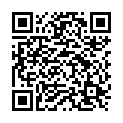|
|
|
| Module code: KIB-DSIG |
|
|
2V+2P (4 hours per week) |
|
4 |
| Semester: 5 |
| Mandatory course: no |
Language of instruction:
German |
Assessment:
Written exam
[updated 20.03.2007]
|
KI560 (P200-0005) Computer Science and Communication Systems, Bachelor, ASPO 01.10.2014
, semester 5, mandatory course
KIB-DSIG (P200-0005) Computer Science and Communication Systems, Bachelor, ASPO 01.10.2021
, semester 5, optional course
KIB-DSIG (P200-0005) Computer Science and Communication Systems, Bachelor, ASPO 01.10.2022
, semester 5, optional course
|
60 class hours (= 45 clock hours) over a 15-week period.
The total student study time is 120 hours (equivalent to 4 ECTS credits).
There are therefore 75 hours available for class preparation and follow-up work and exam preparation.
|
Recommended prerequisites (modules):
None.
|
Recommended as prerequisite for:
|
Module coordinator:
Prof. Dr. Martin Buchholz |
Lecturer: Prof. Dr. Martin Buchholz
[updated 01.04.2003]
|
Learning outcomes:
After successfully completing this module, students will be able to carry out digital signal processing and analyze telecommunications signals and systems. They will know the different structures of discrete time systems and can analyze them analytically with the help of the discrete Fourier transform and the Z-transform. Students will know how to examine digital systems using Matlab and be familiar with the basic features of a simulation tool such as Simulink and SPW (Signal Processing Workstation). The acquired skills in designing digital algorithms and filters will be intensified in an FPGA as part of the simulation and implementation.
Students will thus, be able to apply their knowledge to complex telecommunication systems and implement the required digital algorithms independently in their later professional life or during the Master program.
[updated 19.02.2018]
|
Module content:
1. Introduction
Ideal and real sampling, sampling theorems, practical aspects of scanning
2. Discrete time signals and systems
Discrete folding, FIR and IIR systems
3. Structure of discrete time systems
4. Representation of discrete time signals and systems in the frequency domain
5. The Z-transform
Stability
6. Simulation of algorithms for digital signal processing
7. Implementation in hardware
Matlab examples and exercises will be provided for all chapters.
[updated 30.07.2021]
|
Teaching methods/Media:
Script, projector, Matlab and SPW Simulation software in the PC room, implementation in FPGA evaluation boards
[updated 19.02.2018]
|
Recommended or required reading:
Oppenheim, A. V.; Schafer, R. W.: Zeitdiskrete Signalverarbeitung, Oldenbourg Verlag, 1999
Stearns, S.D.; Hush D.R.: Digitale Vararbeitung analoger Signale, Oldenbourg, 1999
Von Grünigen, D. Ch.: Digitale Signalverarbeitung, Carl-Hanser Verlag, 2004
Kammeyer, K.-D. / Kroschel K.: Digitale Signalverarbeitung – Filterung und Spektralanalyse, Teubner
Goetz, H.: Einführung in die digitale Signalverarbeitung, Teubner Verlag, 1998
Werner, M.: Digitale Signalverarbeitung mit Matlab, Intensivkurs mit 16 Versuchen, Vieweg, 2006
Brigham, E.O.: FFT Anwendungen, Oldenbourg, 1997
[updated 30.07.2021]
|
Module offered in:
WS 2022/23,
WS 2021/22,
WS 2020/21,
WS 2019/20
|


